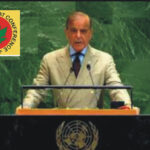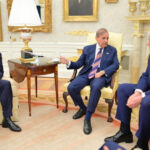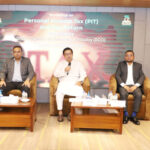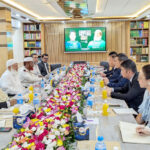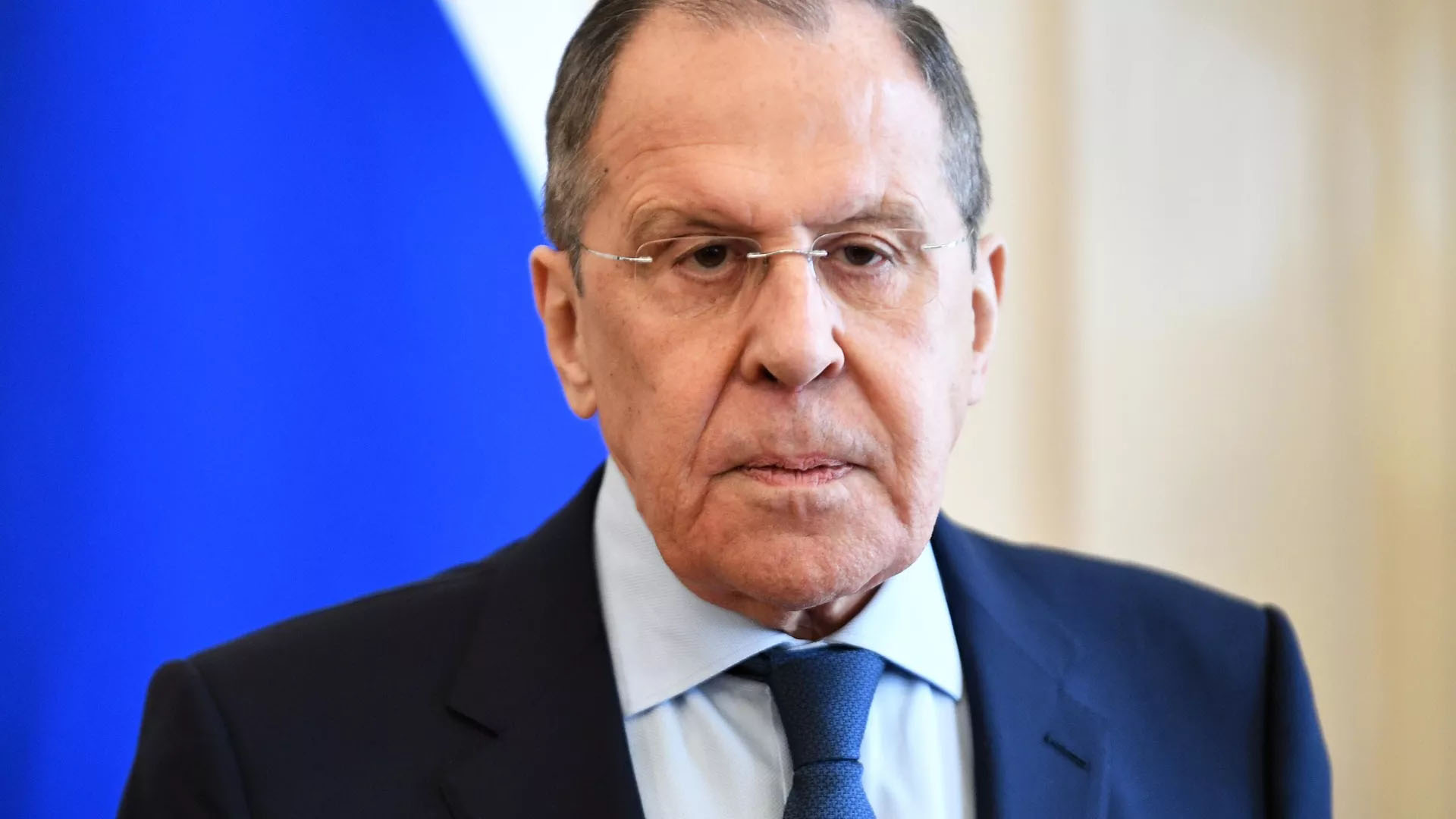
INSIDE RUSSIA
Key Points From Lavrov’s Statements on Results of ‘Sahel Trio’ Meeting
Russia’s Foreign Minister Sergey Lavrov held a press conference today after meeting his counterparts from the Alliance of Sahel States.
Four-way meetings of the foreign ministers of Russia and the Alliance of Sahel States (Niger, Burkina Faso and Mali) are going to be held on an annual basis
Russia would be willing to facilitate the creation of the Alliance of Sahel States’ joint armed forces
A considerable number of Russian advisers operate in the Alliance of Sahel States’ territory
Russia regards the creation of the Alliance of Sahel States as a drive to establish new security architecture in the region
Moscow is ready to provide comprehensive defense, security and economic assistance to the Alliance of Sahel States
Ukraine supports terrorists in Sahel, and the West condones it
Court says seizes $66.4 mln of Chubais, 7 others’ assets on Rusnano suit
According to investigators, the wrongdoers took illegal actions to reclassify financial obligations in 2017 to conceal the company’s poor performance
MOSCOW, April 5 /TASS/. The Moscow Arbitration Court has seized $66.4 million of cash and other property belonging to former Runano head Anatoly Chubais and seven other people, the court’s materials available to TASS show.
According to the court’s ruling, Rusnano filed a lawsuit against Anatoly Chubais, YuryUdaltsov, Oleg Kiselyov, Boris Podolsky, German Pikhoya, Dmitry Pimkin, Vladimir Avetisyan and NikolayTychinin “for a joint recovery of damages in the amount of 3.892 billion rubles and $20.4 million in rubles at the exchange rate of the Central Bank of the Russian Federation on the date execution of the judicial act”. The company also filed an application for interim measures within the limits of $66.4 million of claims and “seizure of funds and other property of close relatives of the defendants within the limits of the claims.”
Earlier the court imposed a security seizure on the property of three top Rusnano managers accused of abuse of power. ArturGalstyan, Rusnano’s Managing Director for Finance, Marina Kasenkova, Director of Accounting, Taxation and Reporting Methodology, and Boris Podolsky, former deputy head of Rusnano, were arrested. They charged under Part 3 of Article 285 of the Criminal Code of the Russian Federation (abuse of authority, which entailed grave consequences).
According to investigators, the wrongdoers took illegal actions to reclassify financial obligations in 2017 to conceal the company’s poor performance. Using distorted reporting data, they provided the company’s sole shareholder, the Russian government, with false information about its financial situation. This allowed the firm to keep state guarantees and raise new funding. As a result, the state had to disburse $510.2 million to the company in 2022-2024.
RDIF sees requests galore to return to Russia from US firms, including energy companies
“I think the focus on joint partnerships is the right focus for further cooperation with American businesses, which, yes, are really interested in working in Russia,” fund CEO Kirill Dmitriev said
MOSCOW, April 6. /TASS/. Russian Direct Investment Fund (RDIF) CEO and special presidential envoy for economic cooperation with foreign countries Kirill Dmitriev said he had recorded a slew of requests from American companies, both from the energy industry and others, to return to Russia.
“We see a large number of requests from American companies, including to us, in the energy sector and other areas. But they can only come to where Russia will welcome them,” Dmitriev said in an interview with Channel One following his trip to the United States.
“I think the focus on joint partnerships is the right focus for further cooperation with American businesses, which, yes, are really interested in working in Russia.”
He said that 150 US firms are still operating in Russia, of which 70% have been present in the country for 25 years. “And despite the political pressure, they just continue to successfully conduct business in Russia,” Dmitriev said.
Dmitriev went to Washington to meet with US special envoy Steven Witkoff. He became the first high-ranking Russian official to visit Washington for talks since 2022. CNN said the visit was aimed at strengthening relations between Russia and the US and finding ways to end the conflict in Ukraine. Dmitriev said that Russia and the United States had taken “three steps forward” in the two days.
OUTSIDE RUSSIA
Ovechkin Breaks Gretzky’s NHL Record by Scoring 895th Goal
MOSCOW (Sputnik) – Washington Capitals’ Russian forward Alexander Ovechkin on Sunday overtook Canada’s Wayne Gretzky as the top sniper in the regular championships of the National Hockey League (NHL) by scoring his 895th goal.
The 39-year-old scored his record-breaking goal in a game against the New York Islanders.
“What a day. Like I always say all the time, it is a team sport and without my boys, the whole organization, the fans, the trainers, coaches, I would never stand there and obviously I would never pass a great one. So, fellas, thank you very much. I love you so much … Thank you, [New York Islanders goaltender Ilya Sorokin] Ilya Sorokin, to let me score 895. Love you, brother. And the last thing, all of you fans from all over the world, Russians, we did it, boys. We did it,” Ovechkin said at a ceremony held during the match.
Ovechkin’s record now includes 895 goals in 1,487 games against Gretzky’s 894 goals in 1,487 games.
Moscow responds to Germany’s WW2 anniversary snub
Germany is reviving Nazi practices by banning Russian and Belarusian delegates from WWII victory celebrations, Maria Zakharova has said
Germany is following in the footsteps of its Nazi predecessors by reportedly banning Russian and Belarusian delegates from its 80th World War II Victory anniversary celebrations, Foreign Ministry spokeswoman Maria Zakharova has said.
On Friday, Berliner Zeitung reported that the German Foreign Ministry has spread classified memos stating that delegates from Moscow and Minsk will not be invited to this year’s commemorations. The confidential document recommended that local institutions expel any Russian or Belarusian representatives from the events, according to the media outlet.
“The very fact that the ideological heirs and direct descendants of Hitler’s executioners will ‘expel’ Russians from the Victory Day celebrations already looks like a blatant insult,” Zakharova commented on the article in a statement on Saturday.
“However, even here, [German Foreign Minister Annalena] Baerbock and her Einsatz team are not original, but almost verbatim borrow the experience of their predecessors,” she said.
Nazi Germany’s Einsatzgruppen – its paramilitary death squads, responsible for mass murder during World War II – first interned civilians in ghettos based on their ethnicity or nationality; they were later sent to death camps, she noted.
Expelling people from events commemorating this year’s Victory Day anniversary based on their nationality “recreates” these “inhumane practices,” the spokeswoman said.
Last year, Bild reported that the German foreign minister’s late grandfather WaldemarBaerbock was an ardent Nazi and decorated officer of the Wehrmacht during the conflict.
SPECIAL MILITARY OPERATION IN UKRAINE
Russia strikes Ukraine’s central arms artillery base, defense enterprises
The strike’s goal has been achieved, its targets have been hit, the Defense Ministry said
MOSCOW, April 6. /TASS/. The Russian military struck at night Ukraine’s central artillery arms base and defense industry enterprises engaged in the production of UAVs, the Defense Ministry said.
“Tonight, the Russian army launched a group strike with long-range air-and sea-based precision weapons, as well as unmanned aerial vehicles, against the central artillery arms base of the Ukrainian army, as well as defense industry enterprises involved in UAV manufacture. The strike’s goal has been achieved. Its targets have been hit,” it said.
Russian air defense systems have shot down a JDAM guided bomb and 100 fixed-wing drones over the past 24 hours, the ministry continued. According to it, Russian army strikes hit the infrastructure of a Ukrainian military airfield, repair and maintenance sites for Western equipment and a military-industrial complex enterprise.
It added that units of Russia’s Battlegroup Center have defeated Ukrainian army and National Guard brigades in the Donetsk People’s Republic (DPR), including Ukraine’s Omega special forces unit.
In the Belgorod direction, Ukraine lost up to 65 troops and four armored combat vehicles.
In the responsibility zone of the Battlegroup West, the enemy lost 230 servicemen and three MaxxProarmoured fighting vehicles: 5″Ukraine lost up to 230 military personnel, three US-made MaxxPro armored combat vehicles, four pickup trucks and four field artillery guns, including two of Western manufacture. The electronic warfare station and an ammunition depot were also destroyed.”
Meanwhile, the Battlegroup Dnepr inflicted over 65 manpower losses on enemy, also destroying an infantry fighting vehicle and three automobiles: “The battlegroup destroyed more than 65 servicemen, an infantry fighting vehicle, three automobiles, four electronic warfare stations and ammunition depot,” the ministry stated.
Ukraine also lost up to 280 servicemen in the area of responsibility of the Battlegroup South. “The units of the Battlegroup South improved their tactical position. They defeated the formations of five mechanized, airmobile and assault brigades of the Ukrainian army near the settlements of Seversk, Ivanopolye, Katerinovka, Tarasovka, Pleshcheyevka and KlebanByk of the Donetsk People’s Republic. The enemy lost up to 280 servicemen, two armored combat vehicles, 17 automobiles and three field artillery guns, including a US-made 155mm M777 howitzer,” the ministry said.
Servicemen of the Battlegroup East defeated Ukrainian brigades in the Donetsk People’s Republic, as well as in the Dnepropetrovsk and Zaporozhye regions. “The units of the Battlegroup East took more favorable lines and positions. They defeated manpower and equipment of four mechanized, airborne assault, airmobile, mountain assault brigades of the Ukrainian army, as well as a marine brigade and a territorial defense brigade near Komar, Razliv, Poddubnoye, Bogatyr, Karla Marksa of the Donetsk People’s Republic, Yanvarskoe, Gavrilovka of the Dnepropetrovsk Region and Marfopol of the Zaporozhye Region. The enemy lost over 130 servicemen,” the ministry noted.
Since the beginning of the special military operation, Russia destroyed more than 50,000 drones and 660 aircraft of the Ukrainian army. “In total, since the beginning of the special military operation, the army destroyed 660 airplanes, 283 helicopters, and 50,082 unmanned aerial vehicles,” the Defense Ministry concluded.
Russian army liberates Basovka in Sumy Region — top brass
In the past day, Ukraine lost more than 170 servicemen, two armored combat vehicles, 12 automobiles, as well as three UAV control points and an ammunition depot in the Kursk direction
MOSCOW, April 6. /TASS/. The Russian army has liberated Basovka in the Sumy Region in the past day, the Russian Defense Ministry said.
“Units of the Battlegroup North liberated Basovka in the Sumy Region during their offensive,” the ministry said.
Moreover, they defeated formations of a mechanized brigade, a tank brigade, three airborne assault brigades and a territorial defense brigade of Ukraine near the settlements of Gornal, Guyevo and Oleshnya in the Kursk Region.
Strikes by operational-tactical, army aircraft and artillery fire struck enemy personnel and equipment near the settlements of Gornal, Guyevo, Oleshnya in the Kursk Region, as well as Basovka, Belovody, Budivelnoye, Vladimirovka, Vodolagi, Zhuravka, Loknya, Miropolskoye, Sadki, Shalygino, Yunakovka and Yablonovka in the Sumy Region.
In the past day, Ukraine lost more than 170 servicemen, two armored combat vehicles, 12 automobiles, as well as three UAV control points and an ammunition depot in the Kursk direction. The operation to destroy Ukrainian formations continues.
Ukrainian army attacked DPR territory 63 times over day
The Ukrainian armed forces attacked settlements of the Donetsk People’s Republic (DPR) 63 times over the day, the DPR department for documenting of Ukraine’s war crimes said.
“Data were received that two civilians were killed and eight others were wounded,” it informed.
Time has come to stop war in Ukraine, Musk says
US businessmanElon Musk, currently in charge of the US Department of Government Efficiency in the administration of President Donald Trump, spoke in favor of ending the conflict in Ukraine when speaking at the congress of the Italy’s Lega Party by a videoconference link.
“I have no respect for the warmongers,” Musk said when answering a question of Matteo Salvini, the party leader and the Deputy Prime Minister of Italy. “This is an evil thing,” he continued, referring to the conflict in Ukraine. The time has come to put it to an end, Musk added.
Ukrainian army destroyed, damaged up to 1,000 houses in Zaporozhye Region
The Ukrainian army damaged or destroyed about 1,000 houses in the Vasilyevsky Municipal District of the Zaporozhye Region, head of the district administration Natalia Romanichenko told TASS on the sidelines of the Integration-2025 Forum.
“We have up to a thousand residential houses damaged in part or completely destroyed. And again, shelling takes place every day. Still, when I depart to a certain address after shelling, the residents say always, the most important that we remain alive,” Romanichenko said.
The Integration 2025 Forum dedicated to development of Donbass and Novorossiya regions took place in Rostov-on-Don for the second time. TASS is the general information partner of the forum.
Drone hunting unmanned surface vehicles to be tested in Russia
The Fortuna-T drone designed to hunt Ukrainian unmanned surface vehicles will be tested in Russia this April, a lead engineer of the Unmanned Competencies Center told TASS.
“We are now working on the Fortuna-T aircraft project designed for the Russian Navy. This is a fixed-wing type drone with an artificial intelligence system and a thermal imaging device, which will hunt Ukrainian unmanned surface vehicles. The aircraft will be tested in April,” the specialist said.
The aircraft will be launched by hand without using any auxiliary devices, the engineer said. “The Fortuna-T will be thrown into the air and loiter over water surface. The aircraft flying time now is three hours with the small payload. As soon as our aircraft detects an unmanned surface vehicle on water surface, it automatically locks on and engages it,” he added.
Russian Air Defense thwarted drone attack in Rostov Region — acting governor
Russian air defense units thwarted a drone attack against Rostov-on-Don and three rural districts this night, acting governor of the Rostov Region YurySlyusar said.
“Air defense forces and means thwarted an air attack of the adversary at night, destroying unmanned aerial vehicles in Rostov-on-Don, Aksaisky, Myasnikovsky and Oktyabrsky rural districts. Provisionally, nobody was injured,” Slyusar wrote on his Telegram channel.
Battlegroup West destroyed five Starlink terminals — spokesman
Servicemen of the Russian Battlegroup West neutralized more than 250 Ukrainian troops and destroyed five Starlink terminals and 33 drone control centers, Battlegroup Spokesman Ivan Bigma told reporters.
“Thirty-three drone control centers, five Starlink terminals and a field ammunition depot were destroyed,” Bigma said.
Air defense crews destroyed two HIMARS projectiles and 22 fixed-wing drones, he added.
Russian BattlegroupEast destroyed twelve Ukrainian drone control centers
Russian BattlegroupEast destroyed six rotor drone copters and twelve drone control centers over day, Battlegroup Spokesman Alexander Gordeev told reporters.
“The adversary lost up to 140 troops, six vehicles, field artillery guns, six Baba-Yaga heavy rotor drone copters and twelve drone control centers over the day,” the spokesman said.
Eleven drones downed in Russian regions at night — Defense Ministry
Russian defense assets intercepted and destroyed eleven drones in three Russian regions at night, the Russian Defense Ministry said.
“Air defenses on duty intercepted and destroyed eleven Ukrainian unmanned aerial vehicles over the past night: eight drones over the territory of the Rostov Region, two drones over the territory of Kursk Region and one drone over the territory of the Belgorod Region,” the ministry informed.
Russian army extensively advances in Kupyansk direction — expert
Russian servicemen, preventing the Ukrainian armed forces from regaining the positions lost earlier, are successfully advancing on a great section of the front in the Kupyansk direction with a length of more than 35 kilometers, which runs from the Russian border to the west of Petropavlovka in the Kharkov Region, military expert AndreyMarochko told TASS.
“Though the advances here are quite small, they are observed on a broad section of the front stretching more than 35 kilometers — from near Russia’s border all the way west of Petropavlovka,” he said. “Our troops continue moving forward while blocking Ukrainian attempts to retake lost ground,” Marochko added.
The expert also highlighted that the two Russian bridgeheads in the area are now “very close to linking up,” which could further strengthen their position.
This follows earlier reports from Marochko, who stated on March 29 that Russian forces had fully secured their positions near the village of Topoli — a foothold that enables further advances. The settlement was liberated on February 24 by units of the Battlegroup West.
Ukraine deploys contracted soldiers 18-24 y.o. to Liptsy direction
The Ukrainian army’s activity in the Liptsy direction of the Kharkov Region may be connected with the redeployment of units of the 92nd separate assault brigade, which is made up of 18-24-year-old Ukrainians, Russia’s security services told TASS.
“Our scouts uncovered M109 Paladin infantry fighting vehicles belonging to Ukraine’s 92nd separate assault brigade in the Liptsy direction. Artillery units then destroyed the targets,” the source said. “The uptick in enemy activity may be linked to the movement of units from the 92nd brigade, which is composed of young Ukrainians aged 18 to 24,” he added.
The source also noted that Russian forces had previously eliminated some of the more experienced soldiers from this formation.
On March 1, the Russian Defense Ministry reported that the Kiev regime’s efforts to replenish its frontline losses had failed. In February, territorial recruitment centers mobilized fewer than 28,000 recruits, while total losses for the month reached 38,920 servicemen.
According to the ministry, despite the launch of the “new contract 18-24” on February 11, aimed at encouraging voluntary enlistment of young Ukrainians into the army, the campaign fell short. Fewer than 2,000 volunteers were recruited, falling well below the monthly target of 4,000.
Ukraine attacks Russian energy facilities seven times over past day
The Ukrainian army attacked Russian energy facilities seven times over the day, the Russian Defense Ministry said.
“Over the past 24 hours, Ukraine launched seven attacks on Russian energy infrastructure facilities,” it said.
Ukraine attacks Russian energy facilities seven times over past day
The Ukrainian army attacked Russian energy facilities seven times over the day, the Russian Defense Ministry said.
“Over the past 24 hours, Ukraine launched seven attacks on Russian energy infrastructure facilities,” it said.
Ukraine’s strikes damage energy facilities in Crimea, Bryansk, Rostov, Voronezh regions
Ukrainian strikes on facilities in Crimea, and the Bryansk, Rostov, and Voronezh regions have caused damage to energy sites, the Russian Defense Ministry said.
“In the Republic of Crimea, on April 5 at 6:43 a.m. Moscow time, a Ukrainian UAV damaged the high-voltage Ostrovskaya-Kovylnoye line belonging to the Krymenergo State Unitary Enterprise. In the Bryansk Region, at 12:52 a.m. on the same day, the Khvoschevskaya power facility — part of Bryanskenergo, a unit of Rosseti Center — came under attack. As a result, household consumers in the Sevsky District were left without power,” the ministry reported.
“Later that day, at 2:20 p.m., another high-voltage line of Bryanskenergo came under UAV attack, once again disrupting power supply to some residents in the Sevsky District. At 2:53 p.m., a third strike targeted another high-voltage line of Bryanskenergo, this time causing a wire break and power outages for household consumers in the Suzemsky District.”
In the Rostov Region, at 1:16 a.m. on April 6, a high-voltage line was disconnected following a Ukrainian UAV strike on the Rostovskaya power facility.
In the Voronezh Region, at 6:05 a.m., a distribution aboveground low-pressure steel gas pipeline operated by Gazprom’s gas distributing station was damaged in another UAV attack. A second strike at 7:43 a.m. damaged an additional pipeline of Gazprom gas distributing station in Voronezh.
INSIGHTS
Rare Earth Metals: Who Will Dominate the Market?
Russia, the US, Canada, Australia and China may become the main players in the rare earth metals market over the next 10-15 years, Boris Krasnozhenov, head of the Securities Market Analytics Department at Alfa Bank, told Sputnik.
Extracting these metals stipulates hefty financial investments and appropriate technologies, something that Russia possesses, Krasnozhenov pointed out.
He suggested that joint ventures or projects in Australia and Canada will most likely be created, which will envisage deliveries of the rare earth metals to the US.
“Russia will be able to fully provide itself with these metals by annually producing 7,500 tons,” the expert underlined.
He recalled that Russia’s reserves of rare earth metals amount to about 20-30 million tons, which is second in the world, while the US almost fully depends on rare earths imports from China, Malaysia and Japan.
“The US constantly has conflicts with China, which dominates the global market for rare earth metals and from time to time changes the terms of export, reducing or increasing export quotas. This is why the US may be interested in developing joint projects with Russia,” Krasnozhenov concluded.
Here’s what’s really behind Trump’s tariffs – and how they may backfire
The massive new levies are not primarily punitive in nature, but could be perilous if they fail to achieve their goal
I am not a supporter of Donald Trump, but I can recognize the potential of tariffs as a strategic counter to globalism and the multipolar world led by BRICS – Brazil, Russia, India, China, and South Africa.
Tariffs are taxes levied on goods imported into the United States, paid by American importers rather than foreign governments. For example, if a company imports Chinese steel subject to a tariff, it incurs an additional cost at US Customs, often passed on to consumers through higher prices. Trump utilized tariffs extensively – targeting steel, aluminum, and numerous Chinese goods – to protect US industries, promote domestic production, and curb the expansive reach of globalism, which has reduced some nations to mere transit points for multinational corporations. Tariffs also address the significant US trade deficit, where imports vastly outstrip exports. By raising the cost of foreign goods, they could bolster American manufacturing and diminish that disparity. Historically, the US relied exclusively on tariffs to finance its government, a practice dominant in the 18th and 19th centuries when income taxes were nonexistent. Before the 16th Amendment in 1913, tariffs funded federal operations – roads, defense, and administration – without taxing individual earnings, a system Trump’s tariff-heavy approach partially revives to support economic objectives. This reduces reliance on creditors like China, which holds a substantial share of US debt. Many, however, conflate tariffs with sanctions, assuming a punitive intent. Under Trump, tariffs are distinctly an economic tool, advancing his America First agenda by prioritizing US interests, marking a shift from a globalist system under US leadership – where international cooperation and institutions prevailed – toward a US-centric imperialism that asserts dominance through economic might, potentially paving the way for a multipolar world defined by competing spheres of influence.
The US holds a formidable advantage: its market represents a critical portion of many countries’ exports, granting significant leverage. Nations such as Canada, Mexico, and China depend heavily on American consumers – far more than the US relies on their markets. When Trump imposed tariffs on Canadian steel, Canada faced immediate pressure to adapt, as losing US trade was untenable. Mexico acquiesced during trade negotiations under tariff threats, and South Korea would likely face similar constraints. This asymmetry enhances tariffs’ coercive power, compelling smaller economies to adjust rather than resist.
In recent years, tariffs have generated considerable revenue, echoing their historical role as the sole federal income source in earlier eras, offering funds that could establish a sovereign wealth fund – potentially invested in gold or cryptocurrencies – to strengthen US economic autonomy, counter inflation, or leverage digital advancements. Strategically, this enhances national security by reducing dependence on states Washington deems adversarial, like Russia and China, protecting against disruptions in vital supplies such as rare earths or energy. For critics of globalism, tariffs offer a means to reclaim sovereignty, augmented by financial gains. They also suggest a potential exit from supranational bodies like the World Trade Organization (WTO), which Trump views as restrictive. Disregarding WTO rules could presage a withdrawal from global trade frameworks, possibly unsettling the European Union, where divergent interests – such as those between Germany and Italy – might intensify divisions. This may mark America’s final effort to counter the rise of BRICS, resisting a shift from US-led globalism to a multipolar order with distinct spheres of influence.
The US dollar’s status as the world’s reserve currency is crucial, facilitating low-cost borrowing, effective sanctions, and trade dominance. Tariffs reinforce this by tackling the trade deficit and financing sovereign initiatives, yet BRICS’ de-dollarization efforts – promoting alternative currencies – threaten its foundation. Should the dollar’s preeminence falter, funding a wealth fund or industrial revival becomes problematic, foreign investment wanes, and US influence diminishes. Against the multipolar vision of BRICS, tariffs are a vital bid to preserve economic power; losing dollar hegemony would render this approach unviable.
The drawbacks, however, are considerable. Inflation increases as higher import costs elevate prices for goods like clothing, electronics, and vehicles, compounding prior price pressures in the US. Supply chains, already complex, suffer further disruption, leading to delays and shortages. Industries reliant on foreign components – such as automakers needing semiconductors – face challenges, while smaller firms struggle to cope. Retaliatory actions exacerbate the situation: China has targeted US agricultural exports, and Europe has reciprocated. A dearth of STEM professionals – engineers and technologists – impedes swift industrial redevelopment. Certain products, like smartphones or rare-earth-dependent technologies, would be exorbitantly costly to produce domestically due to high labor expenses and limited resources. Reindustrialization requires immense investments in infrastructure, training, and time – new facilities like steel mills demand years to develop.
For opponents of globalism, tariffs reduce the trade deficit, finance sovereignty in a manner reminiscent of the tariff-exclusive funding of old, and contest WTO authority while opposing BRICS’ momentum toward a multipolar world of regional powers. America’s export leverage – evident in its influence over Canada and Mexico – fortifies its stance. Withdrawal from the WTO could emancipate American policy, potentially deepening EU rifts, such as between France and Poland. Yet, shortages of skilled workers, elevated costs, and extended timelines pose risks. Inflation rises, supply chains falter, and trade disputes escalate – China’s responses are deliberate, and the EU remains steadfast. The deficit may lessen, but at the cost of pricier goods and reduced availability. The dollar’s dominance is indispensable; de-dollarization undermines this strategy.
The appeal is substantial: tariffs generate revenue, address the deficit, counter adversaries, and leverage US market influence against BRICS, aligning with Trump’s economic America First strategy – shifting from globalist cooperation to imperial assertion – rather than punitive sanctions. This revenue, recalling an era when tariffs alone sustained the government before income taxes existed, holds promise – gold for stability, cryptocurrencies for innovation. Yet, execution is formidable. Inflation pressures intensify, supply disruptions persist, and businesses – especially smaller ones – suffer, while larger entities adapt slowly. The trade deficit may improve, with nations like Canada and Mexico yielding to US pressure. An exit from the WTO could disrupt global trade norms, and EU divisions might widen, signaling a multipolar shift. In resisting BRICS, the dollar’s role is paramount – its decline would spell failure. Security may strengthen, but economic stability could weaken. For globalism’s opponents, this offers control, resources, and defiance. For the US it is a high-stakes endeavor: promising if successful, perilous if it falters. As the multipolar era advances, with spheres of influence emerging, this may represent its final counterstroke.
